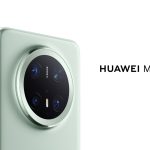Commerce is as old as humanity, and yet innovation in how to build better and more efficient companies not only continues, but is accelerating. Although many forms of business innovation exist, marketplaces seem simplest at first glance, but they have evolved significantly from exchanging goods in the town square to digital forms that keep growing increasingly efficient. Marketplace CEOs can reframe their thinking about marketplace structure in a way that increases the availability of popular products and enhances the customer experience while minimizing capital outlay.
The fundamental definition of a two-sided marketplace is some sort of platform through which buyers transact with sellers, or, alternately, “demand” transacts with “supply” (two-sided is considered to be the most “classic” marketplace structure, though three-sided and n-sided marketplaces exist, too). The marketplace itself can be a digital platform, technological or human middleman, or even a location, and its value is determined by how efficiently and effectively it facilitates transactions, and, if you’re an investor, how quickly the marketplace is growing, how much money the marketplace itself makes (“rake”), and how defensible it is from potentially competitive marketplaces and disintermediation, among other things.
Retailers are a familiar example of marketplaces, because they aggregate products from multiple manufacturers (“supply”) and offer the aggregation to consumers (“demand”). During this exchange, the retailers must pay upfront for the products that they subsequently mark up and sell.
In general, the heavier the model, the more control the company has over the customer experience.
In the last 15 years or so, the “sharing economy” gave rise to a new form of marketplace: the “asset-light” marketplace. Venture capitalists celebrated potentially the most valuable form of marketplace ever and funded the likes of Uber, Lyft, and Airbnb. There are key differences between an asset-light marketplaces and more traditional marketplaces. While a retailer purchases the shampoo before selling it to the consumer, and the taxi company purchases the cab, Uber does not purchase the car before making it available, and Airbnb does not purchase the house before renting it out.
Asset-light marketplaces manage to make money from things they don’t own or even fully control merely by facilitating the introduction and payment between the supply and the demand. Yet, these “asset-light” platforms own the relationship with the customer, can scale without the capital investment required by “asset-heavy” marketplaces such as retailers, and ultimately generate so much money that they can transform entire industries.
While asset-light marketplaces have proven to be a powerful innovation, the asset-light model has limitations and has led, somewhat full circle, to the development of certain asset-heavy platforms that are better suited to meeting some customer needs.
The unbearable lightness of being asset-light by Ram Iyer originally published on TechCrunch






